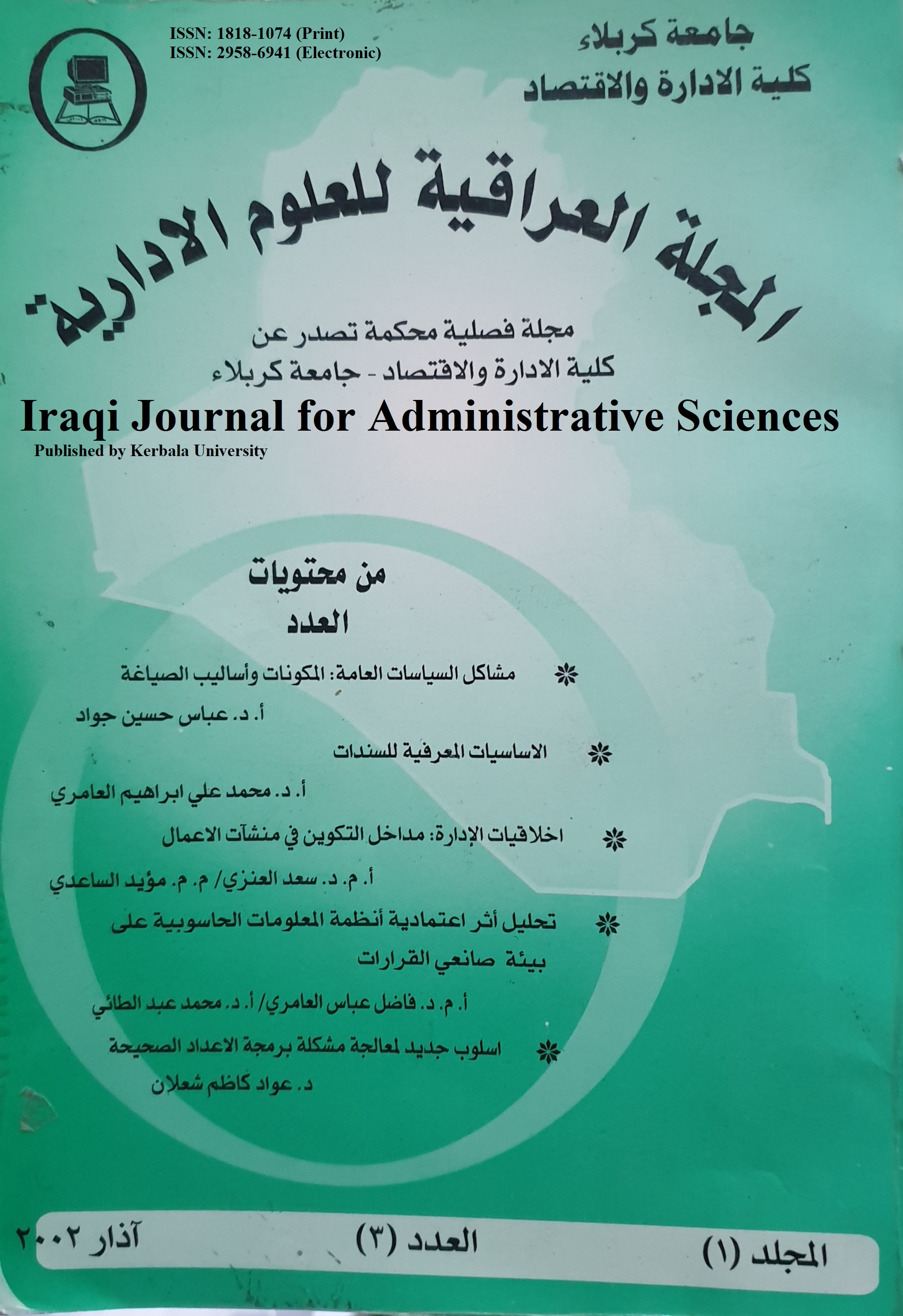Public policy problems: components and formulation methods
Keywords:
Public policy problems, formulation methodsAbstract
The government seeks to achieve diverse goals, which depend on adopting purposeful public policies to serve the community. Public policies can be defined as the actions taken or intended by the government to meet the requirements or needs desired by citizens. Since the government is responsible for formulating various types of public policies, such as healthcare, education, internal and external security, foreign relations, agriculture, industry, environmental protection, crime prevention, and others, it uses these policies as tools for planning, organizing individuals' and society's lives, directing them towards improvement. Public policies involve individuals and groups from governmental and non-governmental sectors characterized by complexity and difficulty. The level of this difficulty depends on multiple and diverse economic, social, and political factors. For example, during economic prosperity, if the government wants to issue decisions or public policies to implement recreational projects, such policies do not provoke controversy or political conflict among society's groups due to the availability of necessary financial allocations for executing such projects. However, if such policies are proposed during economic crises, they may spark controversy that could lead to conflict, making formulating public policies more complex and difficult. In such cases, the relevant government authorities must adopt principles and standards characterized by prudence, rationality, avoiding extravagance and waste, working on cost-effectiveness, enhancing productivity, and so on.
Downloads
Published
How to Cite
Issue
Section
License
Copyright (c) 2002 https://creativecommons.org/licenses/by-nc-nd/4.0

This work is licensed under a Creative Commons Attribution-NonCommercial-NoDerivatives 4.0 International License.
Authors retain the copyright of their papers without restrictions.




